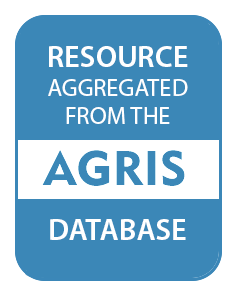What is AGRIS?
AGRIS (International System for Agricultural Science and Technology) is a global public database providing access to bibliographic information on agricultural science and technology. The database is maintained by CIARD, and its content is provided by participating institutions from all around the globe that form the network of AGRIS centers (find out more here). One of the main objectives of AGRIS is to improve the access and exchange of information serving the information-related needs of developed and developing countries on a partnership basis.
AGRIS contains over 8 million bibliographic references on agricultural research and technology & links to related data resources on the Web, like DBPedia, World Bank, Nature, FAO Fisheries and FAO Country profiles.
More specifically
AGRIS is at the same time:
A collaborative network of more than 150 institutions from 65 countries, maintained by FAO of the UN, promoting free access to agricultural information.
A multilingual bibliographic database for agricultural science, fuelled by the AGRIS network, containing records largely enhanced with AGROVOC, FAO’s multilingual thesaurus covering all areas of interest to FAO, including food, nutrition, agriculture, fisheries, forestry, environment etc.
A mash-up Web application that links the AGRIS knowledge to related Web resources using the Linked Open Data methodology to provide as much information as possible about a topic within the agricultural domain.
Opening up & enriching information on agricultural research
AGRIS’ mission is to improve the accessibility of agricultural information available on the Web by:
- Maintaining and enhancing AGRIS, a bibliographic repository for repositories related to agricultural research.
- Promoting the exchange of common standards and methodologies for bibliographic information.
- Enriching the AGRIS knowledge by linking it to other relevant resources on the Web.
AGRIS is also part of the CIARD initiative, in which CGIAR, GFAR and FAO collaborate in order to create a community for efficient knowledge sharing in agricultural research and development.
AGRIS covers the wide range of subjects related to agriculture, including forestry, animal husbandry, aquatic sciences and fisheries, human nutrition, and extension. Its content includes unique grey literature such as unpublished scientific and technical reports, theses, conference papers, government publications, and more. A growing number (around 20%) of bibliographical records have a corresponding full text document on the Web which can easily be retrieved by Google.
Members:
Resources
Displaying 2156 - 2160 of 9579Land rental development in rural Jiangsu, ChinaTransaction cost-saving effects via the rural shareholding cooperative system
Preceding studies demonstrate that there are two important prerequisites that facilitate land rental in agriculture; one is outmigration of farm labor, and the other is the securement of farmers' land rights. This is especially true for the counties and/or regions where the farm sector is overemployed and farmland has yet to be privatized. Considering these empirical findings quite tenable, this paper pays special attention to rural shareholding cooperatives (RSCs) that have been established recently in rural China.
Settlement formation of reclaimed farmlands developed in the Osaka coastal area in the early Meiji era
The developments of reclaimed farmlands were performed actively in Osaka in the Edo era. As a result the vast lands, which amounts to more than 20,000 ha, were produced, and it was happened to exert a great influence on urban development in the last part of the Meiji era. Because they were the reclamation of the shallow water and also, were under development by private capital that was called 'Chonin Ukeoi Shinden', reclaimed farmlands contracted by the trading class, the circumstances may be quite different from those of the inland rural areas.
The planning requirements for prevailing small hydropower in hilly and mountainous regions
The planning approach to prevailing small hydropower is still to be established. The varying characteristics of hydropower products such as type, color and shape may affect regional landscape characteristics. The objective of this study is to recognize the impact of potential landscape change by prevailing small hydropower in hilly and mountainous regions that are advantaged in water resources and natural landscape. The study areas were the Minamioguni Town and Itsuki Village in Kumamoto Prefecture.
Relationship between species composition of birds crossing over boundaries of patchy woodlands and surrounding landcover
Recent studies have indicated that conditions of surrounding landscape matrix around a habitat patch can influence avian community in the patch. This fact suggests the importance of the permeability of habitat boundaries for bird individuals. In this study species composition of birds in and around woodland patches and that of birds crossing over the woodland boundaries were surveyed in urban or suburban landscapes in central Japan. The results were as follows. 1) In suburban landscapes urban avoider species are not likely to cross woodland patch boundaries while urban adapter species are.


